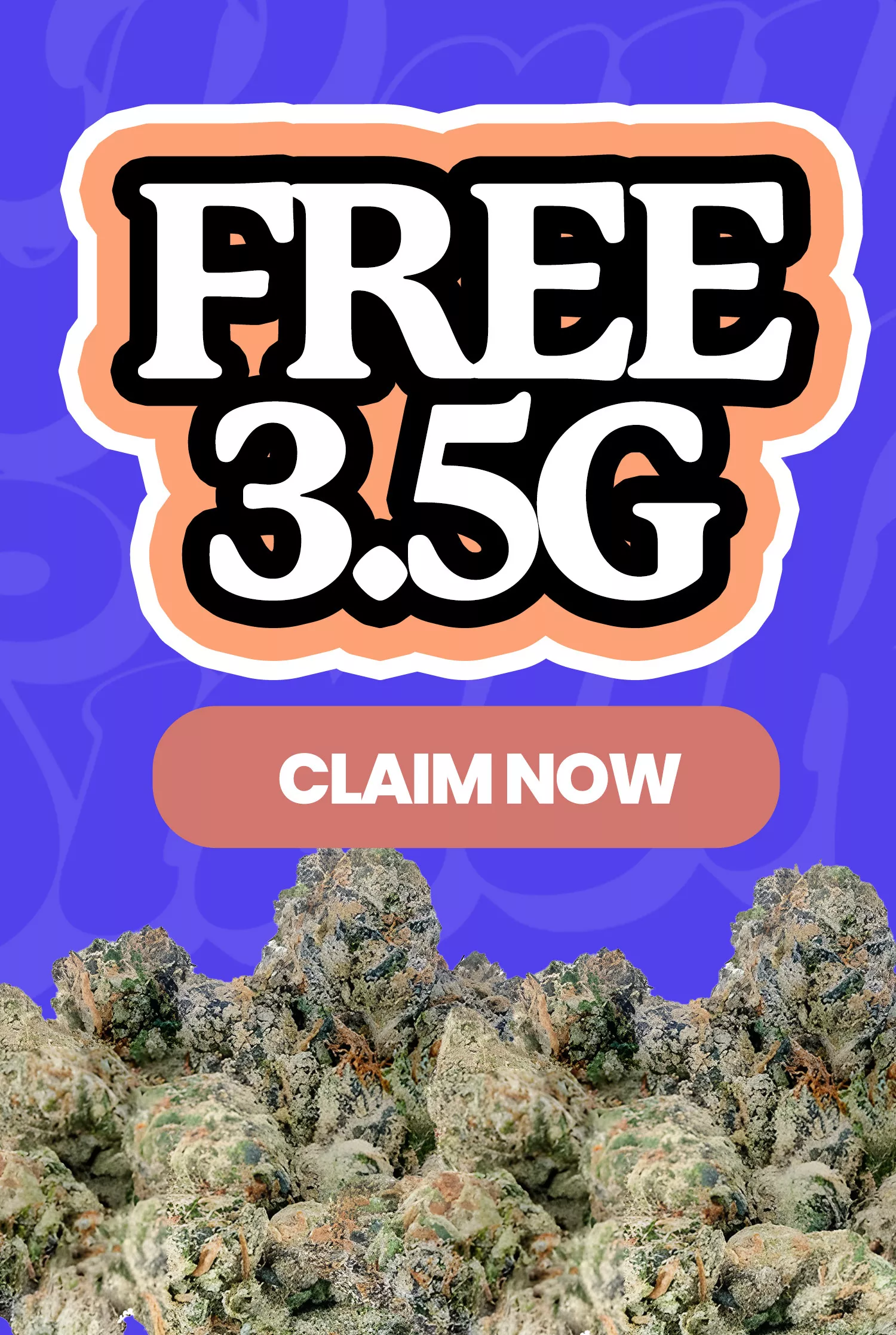Microdosing Shrooms – Everything You Need To Know
- Magic Mushrooms
-
Jul 21
- Share post
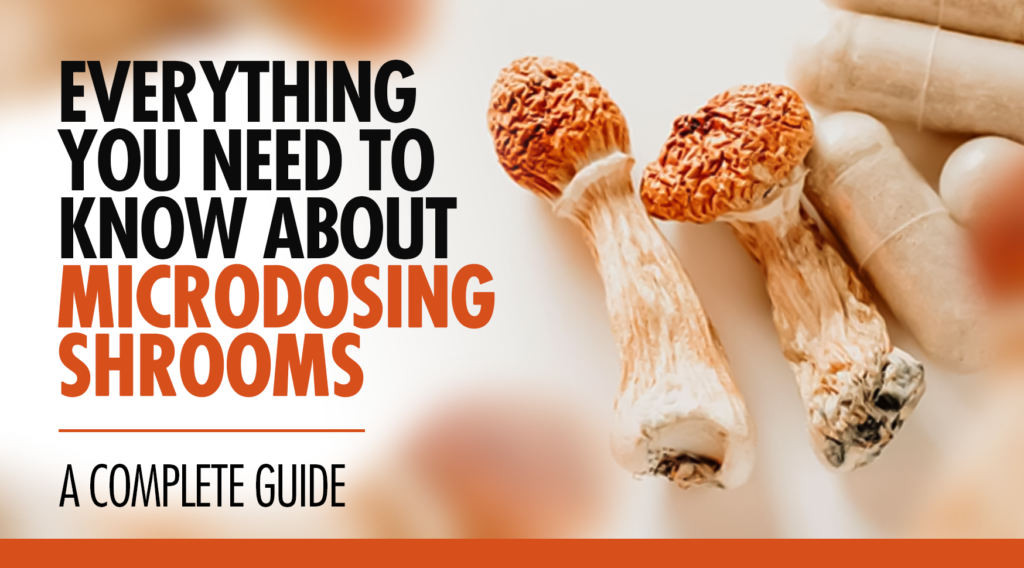
The benefits of microdosing Psilocybin appear endless: it may offer you more energy, enhance creativity, assist your attention, create deeper connections, regulate mood, help with occasional stress, and so much more!
This micro-dose guide covers everything you need to know about what it is, how to micro-dose magic mushrooms, the advantages of magic mushrooms, how to dose, and micro-dosing advice.
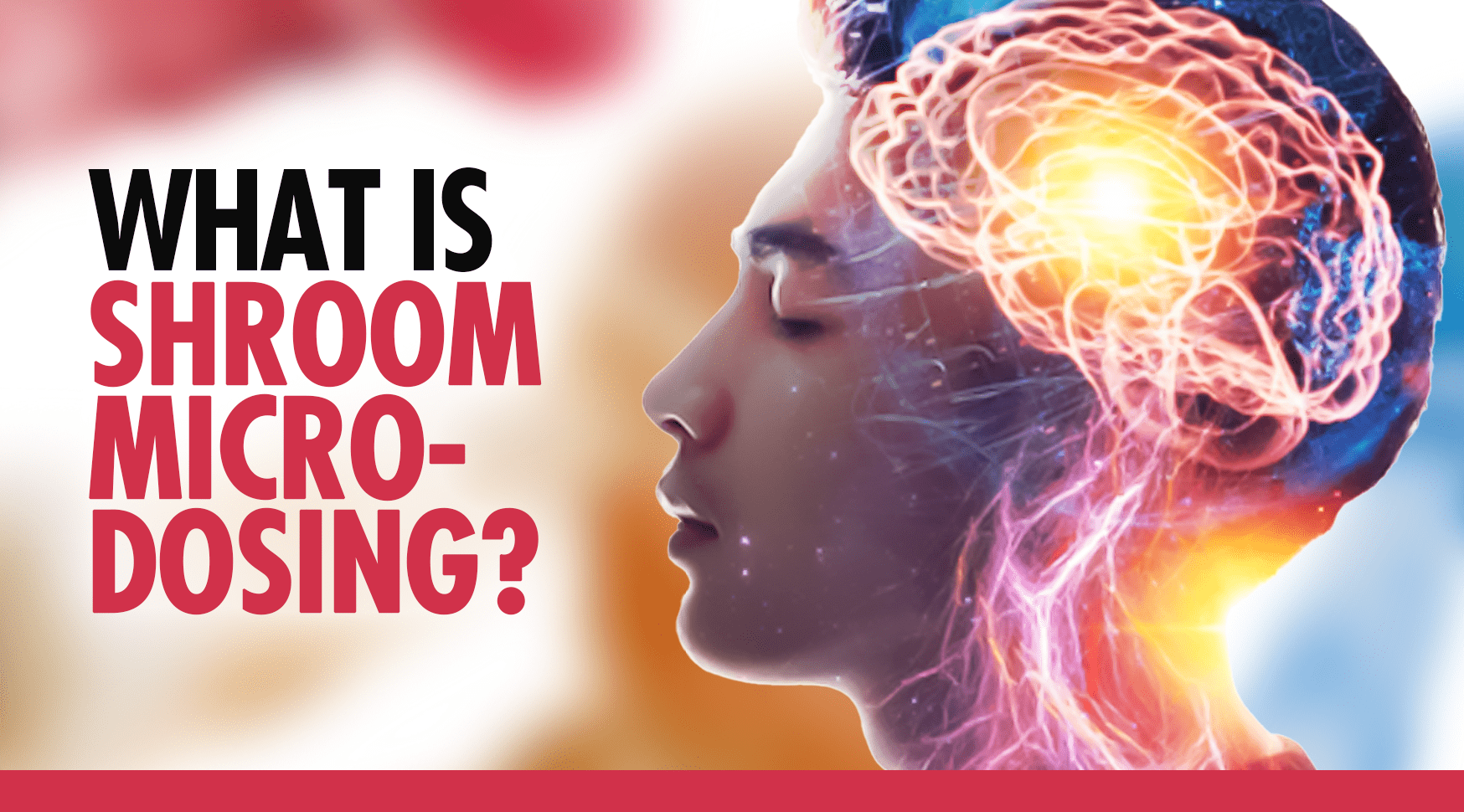
Microdosing Shrooms
Microdosing is ingesting psychoactive drugs at a small dose that becomes almost unnoticeable. If you feel high or hallucinating, you’ve taken too much for it to be considered a micro-dose.
People who micro-dose Psilocybin — the active psychedelic ingredient in magic mushrooms — ingest small amounts. These small amounts fall under the threshold dose for starting a trip. People usually take these small doses for a 30-day cycle. Microdosing psychedelics are designed to produce short and long-term mental benefits and health conditions. At the same time, you can still go about your everyday life and have a really good day.
Is There Evidence for Microdosing Mushrooms?
Although there has been a resurgence in research on Psilocybin during the last decade, clinical data on Psilocybin is limited as it’s still a Schedule-1 substance in the United States.
Most of what we do know is based on the psychological and neurological improvements of higher doses of these psychedelic substances on the brain. Most clinical trial studies focus on the positive therapeutic effects of Psilocybin on depression, anxiety, substance abuse, and those of us facing terminal and mental illness. However, psychedelic researchers are now looking more into mushrooms’ microdoses.
Users report similar positive effects of microdosing shrooms compared to full doses. So the argument goes that we can microdose for many of the lasting psychological benefits of magic mushrooms without taking a heroic dose and seeing God the near-daily.
What’s the Science Behind Microdosing Shrooms?
There are several aspects of the science behind how psychedelics, including Psilocybin, work in the brain. They mainly examine serotonin and the default mode network (DMN). Let’s explain what these are and how psychedelic drugs affect them.
Serotonin
Serotonin is one of the brain’s most important neurotransmitters — a chemical that sends signals between nerve cells. Serotonin helps the brain and nervous system cells communicate, stabilizing your mood and promoting feelings of happiness.
Many common antidepressants, such as citalopram (Celexa) and fluoxetine (Prozac), are selective serotonin reuptake inhibitors (SSRIs). They increase serotonin levels in the brain, increasing your sense of well-being.
Psychedelics mimic serotonin by stimulating a serotonin receptor called 5-HT2A, found in the prefrontal cortex. In doing so, it can:
- Encourage brain connections and activity
- Stimulate neural growth
- Improve cognition, learning, and memory
DMN
The DMN is a system of connected brain areas. It activates when a person isn’t focussed on what’s happening around them or engaged in a demanding task — when your mind shifts into “default.”
The DMN is primarily active during many introspective mental activities, including:
- Self-reflection
- Daydreaming
- Contemplating the past or future
- Considering the perspective of someone else
But a highly active DMN can lead to, interestingly, some of the hallmarks of depression — such as:
- Over-analyzing
- Ruminating on regrets and failures from the past and future
- Feeling angry
- Feeling shameful
Psychedelics can dampen DMN activity, reducing an overactive system’s undesirable effects. This change also enables us to make new connections between areas of the brain that don’t usually talk with one another. The side effects of micro-dosing psychedelics and their interaction with the DMN can include:
- Feeling more present at the moment
- Being able to accept yourself and the events of your past
- Having new insights into your future that may have otherwise been inaccessible
- Accessing flow state more easily
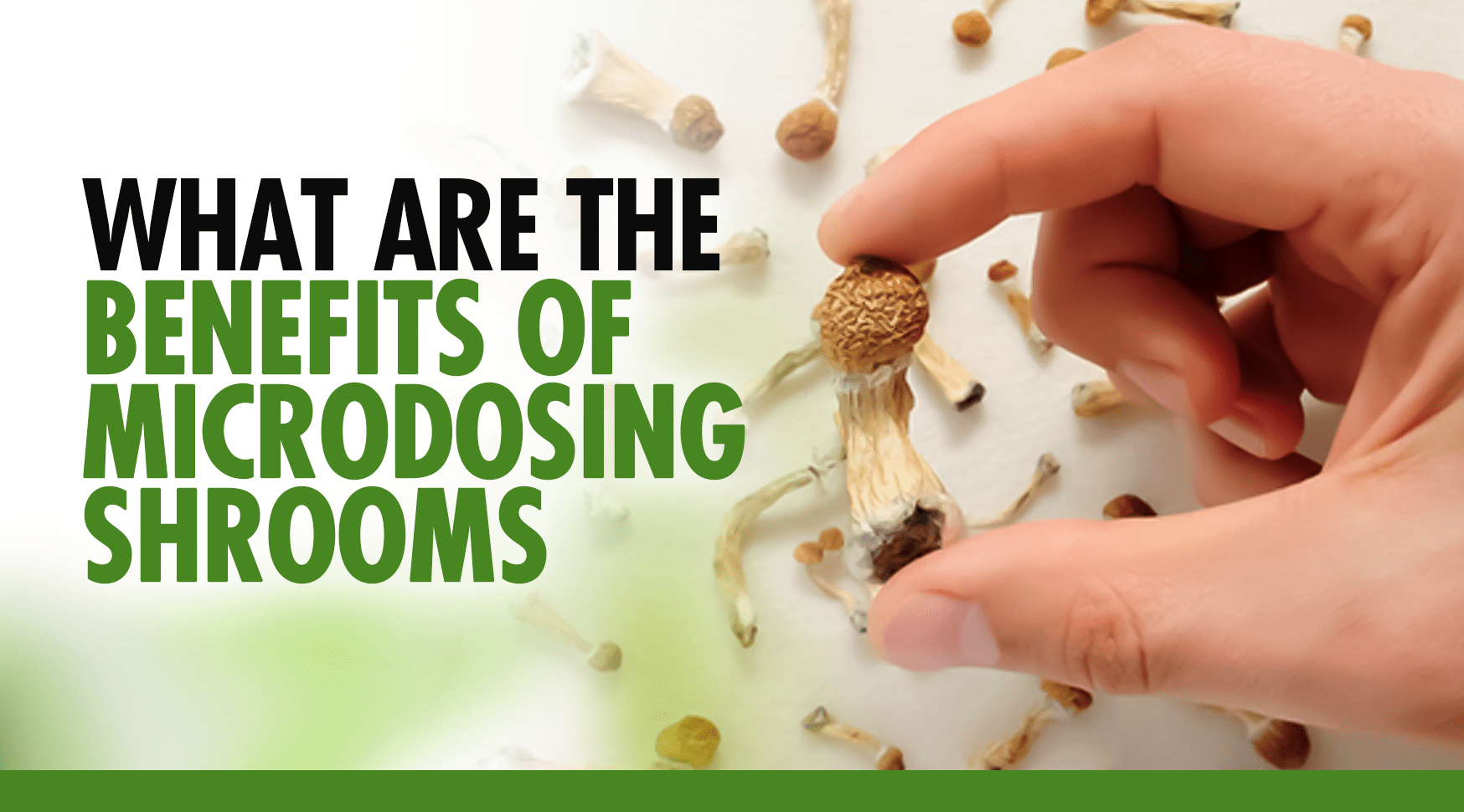
What Are the Benefits of Microdosing Shrooms?
Are micro-dosing shrooms for you? Anecdotally, microdoses report a whole range of similar benefits. Most people practice shroom micro-dosing for health benefits to reduce the frequency and intensity of negative feelings and boost desirable states.
Reducing the Negative
When assessing the effect of Psilocybin on reducing negative states, it’s helpful to look at the underlying conditions that cause them. Finding the underlying condition is the starting point researchers often base their studies around too. Preliminary research and anecdotal evidence suggest Psilocybin can help relieve the symptoms of:
- Depression — even in treatment-resistant patients
- Stress
- Anxiety
- Post-traumatic stress disorder (PTSD)
- Attention deficit hyperactivity disorder (ADHD)
- Addiction
- Mood disorders
Mushrooms and lysergic acid diethylamide (LSD) have also been found to be as good as, or better than, conventional medications for treating cluster headaches.
Increasing the Positive
People don’t just microdose shrooms to help them with mental health issues. Many also microdose to develop themselves as a person. They report tiny doses of magic mushrooms can increase or improve different areas of their life.
Shrooms can help with primary states by:
- Improving mood
- Increasing energy
- Inspiring confidence
They can be used to create work and find solutions through:
- Improved focus
- Greater productivity
- A higher occurrence of flow states
- Enhanced creativity
- Easier creation of new concepts
- Cognitive flexibility
- Single-solution problem solving
Some people microdose shrooms to aid their relationships with other people, as they promote:
- Greater empathy
- Improved social interaction skills
- Closeness and relationships with others
- Better leadership skills
Some users have greater spiritual awareness and a sense of their place in the world. And some sportspeople use it to enhance their coordination and performance. Attend therapy and microdose during the same period. You can access issues and topics that were too difficult.
Long-Term Changes
Once users complete a micro dosing cycle, they often report finding themselves a slightly changed person in the long term too. Common experiences include:
- Improved mood
- Mental flexibility
- Increased empathy
- Psychological stability
- Greater interconnectedness with the physical world
How Should You Microdose Shrooms?
Microdosing with Psilocybin is pretty straightforward. You’ll need to either source your mushrooms from a reputable seller or grow your own from a grow kit. You can use any psilocybin mushrooms for micro-dosing.
Once you have your hands on some shrooms, set up a schedule for micro-dosing, take your microdoses at the right time and commit to taking them for your chosen period. We will help you make these decisions to get the maximum benefit from microdosing mushrooms.
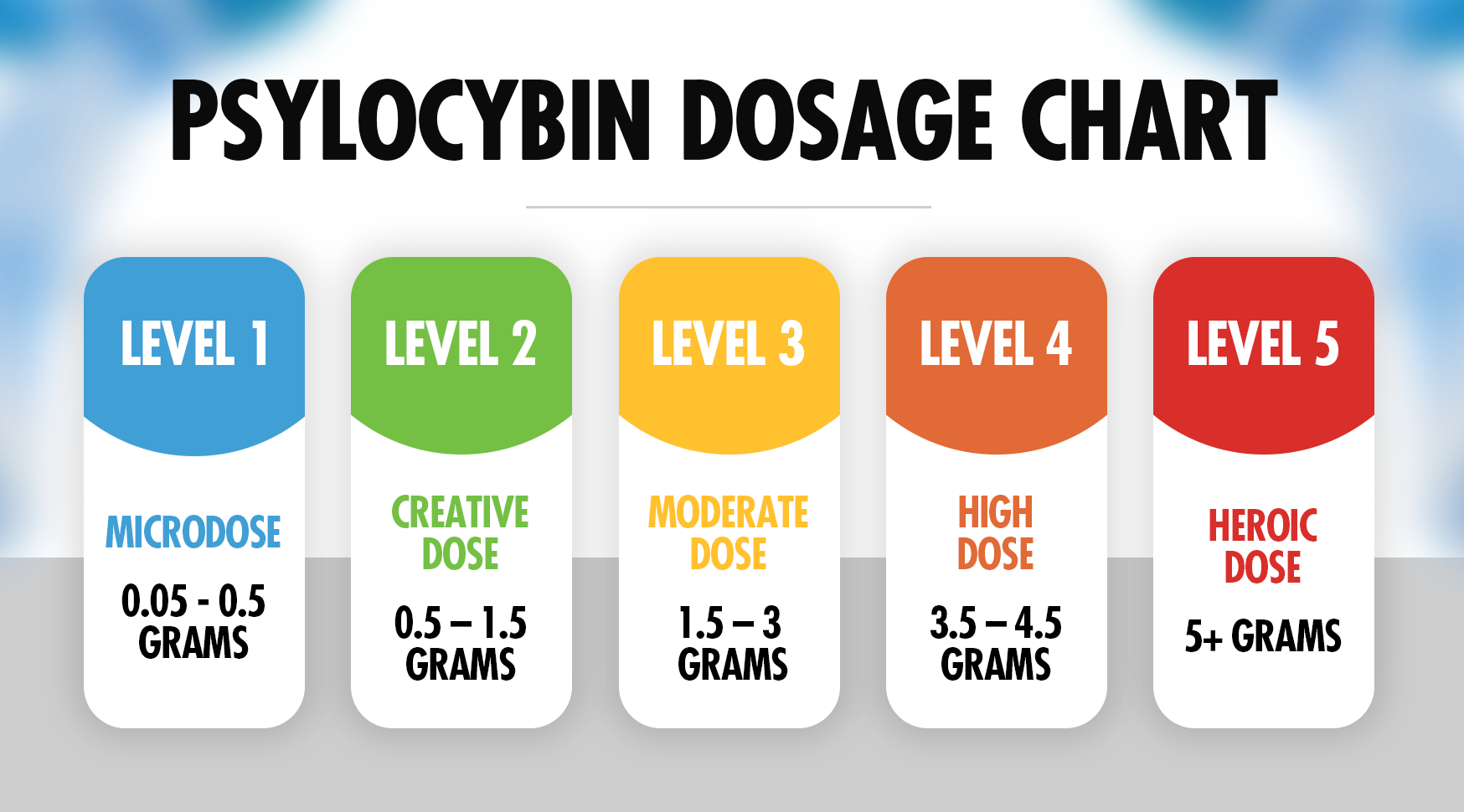
How Much Shrooms Should You Use To Microdose?
The threshold dose for feeling noticeable mental or physical effects from dried psychedelic mushrooms is typically between 0.1 and 0.5 grams. Anything higher than that is more likely to produce “high” effects for three to six hours.
Here’s a chart of the general different dose categories of dried mushrooms for reference:
- Microdose: 0.1–0.5 grams
- Creative dose: 0.5–1 grams
- Moderate dose: 1–2.5 grams
- High dose: 2.5–4.5 grams
- “Heroic dose”: 5 grams
This reference chart can only be a general guide because of these factors, which impact the effect a dose will have on the person who takes it:
- Different strains contain varying amounts of Psilocybin
- Different parts of the same mushroom can contain higher or lower levels of Psilocybin
- The weight thresholds change between fresh and dried shrooms
- People naturally have varying tolerances for substances, affected by factors such as weight
How can you figure out your ideal quantity to microdose? If it’s your first-time shroom micro-dosing, weigh out 0.1g for your starter microdose on some electronic microscales. Adjust the amount from there according to how you feel. You may bump up the microdose and start to experience changes like drowsiness — the first effect of a psilocybin trip. If so, roll your next micro dose to under that amount again. Now you’ve found your ideal micro dosing range.
What Are the Common Methods To Take a Microdose of Mushrooms?
Some users eat their microdose of shrooms as it is — simply placing it in their mouth, chewing, and swallowing.
However, many people find psychedelic varieties of mushrooms have an unpleasant, earthy taste and take a lot of chewing. One way around chewing mushrooms is to grind them into a fine powder and weigh out your microdoses from that. If you mix the powder, you’ll also ingest doses with equal quantities of Psilocybin until the batch runs out.
You can also measure your microdoses of mushroom powder into empty vegetable cellulose capsules and take them as pills. This method takes care of any undesirable flavor, too.
Another micro-dosing option is to make a shroom tea by mixing the powder in hot water and adding honey to sweeten and mask the taste. Mix the powder into almost any other drink you like; just be careful to avoid drinks containing citrus. Citrus may change how your body processes the shroom dose and may intensify the effects.
However you choose to take your mushroom microdose unless you’re eating them immediately, ensure they’re dehydrated and stored in an airtight container. Keeping them dehydrated and away from moisture helps safeguard against mold developing, which may not be evident to the eye but is hazardous to your health.
How Often Should You Microdose Mushrooms?
Experts have different ideas about how often you should microdose shrooms. There are currently two popular schools of thought for shroom micro-dosing — the Stamets Stack and the Fadiman System. The important thing is to experiment with what works best for you and find your groove.
The Stamets Stack
Paul Stamets is one of our most recognized and respected mycologists. He recommends a weekly schedule of four days of pure microdosing, followed by three days of no dose, to reset psilocybin tolerance. Stamets proposes to follow this pattern for four weeks, then a reset for two to four weeks.
Stamets also suggests pairing Psilocybin with lion’s mane and niacin. Both substances can repair neurological damage and create new neural pathways.
The Fadiman System
James Fadiman has collected data from thousands of recorded experiences of micro-dosing. After compiling and studying this, he formulated his 30-day micro-dosing regimen.
Fadiman recommends taking a microdose once every three days, so his system looks like this:
- Day 1: Take a dose.
- Day 2: No dose, but effects are often still felt.
- Day 3: No dose to avoid building up a tolerance to Psilocybin.
On day 4, you’ll repeat this cycle until the 30 days are up. Fadiman advises taking doses before 10 a.m. and keeping to your daily routine. This should be feasible if you take a microdose quantity according to your tolerance.
Why Not Microdose Shrooms Every Day?
The human body builds a high tolerance to Psilocybin very fast. And although microdoses are such small quantities, you’ll likely find the desired effects wear off after a few days.
By taking regular tolerance breaks, you won’t need to start taking larger and larger amounts of such a powerful substance to keep experiencing benefits from it. You may take a different approach than Stamets or Fadiman, for instance, by taking a microdose every other day. However, if you microdose shrooms, schedule tolerance breaks too.
Users often usually take a break after micro-dosing shrooms for a month. This break allows them to reflect on the results, observe any long-lasting changes and assess whether to begin micro-dosing again.
What Time Of Day Should You Take a Mushroom Microdose?
It’s best to choose a fixed time of day to take your micro dose to make sure your doses are spaced evenly. When in the day, this is, however, an entirely personal choice. Most people take their microdose during the morning, as Famidan suggests, to observe beneficial effects throughout the day.
When you take your first microdose, take a day off from work, education, and social commitments, if s will allow you to observe the effects without worrying about acting differently in front of others if the dose is too high. For the doses afterward, remember that a microdose is designed to enhance your daily routine, not change it.
What’s the Future of Microdosing Shrooms?
The future looks bright for micro-dosing Psilocybin, with more and more people realizing its potential to enhance their lives each year. In the U.S., cities are beginning to decriminalize Psilocybin for therapeutic use. Decriminalization is slowly opening the doors for more clinical research into this great substance’s properties and benefits.
Do you want to dip your toe into the waters of microdosing, but you feel apprehensive? Curated micro-dosing retreats allow the chance to be introduced to psychedelics in a guided environment and under experts’ teachings.
